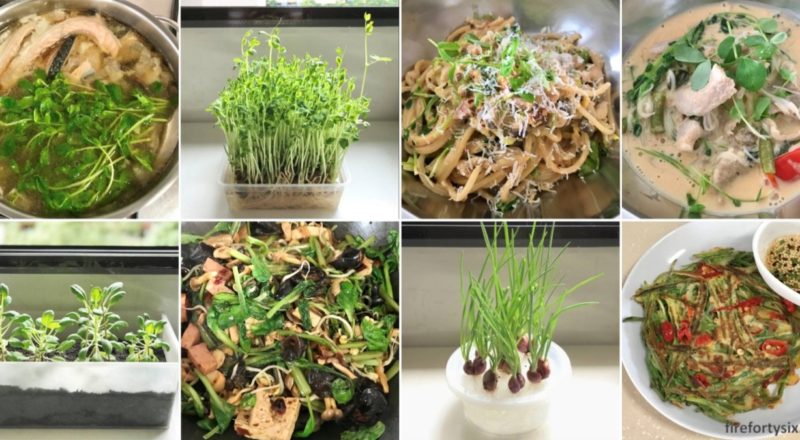You can’t rush Nature, but when you give it time to do its thing, the results can be quite delicious.
After waiting patiently for five months, we were finally able to harvest our precious crop of home-grown baby bok choy. Although you can sort of see their resemblance to the bok choy available in supermarkets, they were much more petite.




They weren’t quite enough for a standalone dish of stir-fried bok choy, so The Wife decided to make Chinese mala xiang guo using various other ingredients, throwing in all the previous bok choy towards the end.
It’s probably more psychological than anything else, but the baby bok choy tasted especially sweet, even when coated in spicy hot mala sauce.
But five months is really a bit too long to wait for such a small harvest, so it’s probably the first and last time that we’ll be eating this and will instead rely on the organic ones from the supermarket.
The spring onions grown in water from market-bought shallots grew much quicker, and in three weeks, they were generously incorporated into a dish of home-cooked pajeon, or Korean spring onion pancake.


These spring onions were much more slender than those found in markets and had a more delicate and subtle taste. But when they’re chopped up literally minutes before cooking, their freshness shines brightly.
Besides using it for pajeon, we also snipped them on top of fried rice and other rice bowls for a hit of gentle but unmistakable oniony flavour. Definitely worth growing future batches for a steady supply of organic spring onion.
But the most efficient crop by far must be the dou miao that we bought from Don Don Donki. After cutting the tops and leaving about 1-2 inches behind, together with the roots, we were able to re-grow them in just tap water and get a second harvest.




The crunchy green sprouts were great in a bowl of Japanese miso soup with fatty salmon, cutting through the oil with its pleasantly grassy taste. It’s admittedly not for everyone, but the flavour of dou miao is something that both The Wife and I enjoy.
By the way, the salmon was also from Donki and offered great value since they were trimmings from cutting slices for their usual sashimi and sushi takeaways. It’s still the same fish, just in more irregular shapes, and after cooking, any bones left behind are easily removed.
Besides using the dou miao in a soup, The Wife experimented by mixing a generous handful into creamy Italian pasta. It turned out to be a great pairing as the sprouts were again able to cut through, and provide a counter-balance, to the richness of the cream and cheese.


Using the same logic, we threw in the last batch of the dou miao, together with some blanched beehoon, into some leftover Thai red curry pork from Pok Pok Thai, our favourite neighbourhood Thai eatery.
The addition transformed the leftovers into a de-facto main dish, complete with the four major food groups of carbohydrates, protein, vegetables and chilli. It made an already delicious curry even more tasty.


Given the versatility of the dou miao and how fast it seems to grow, we’ve decided to grow them from scratch, using maple pea seeds instead of relying on the pre-grown ones sold at Donki.
Once we figure things out, hopefully we’ll be able to create a sustainable source of a versatile and quick-harvesting green vegetable for many more yummy home-cooked dishes.
